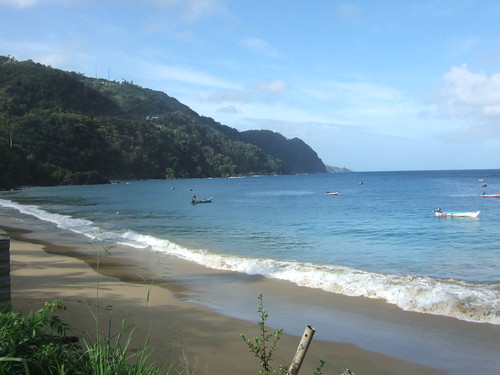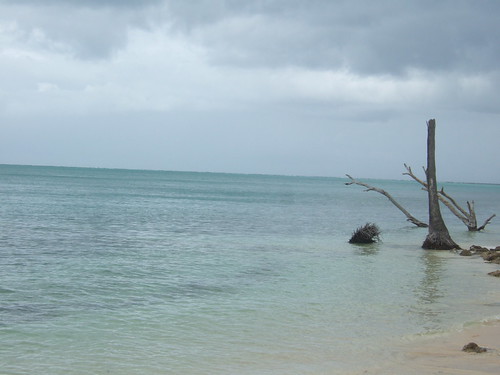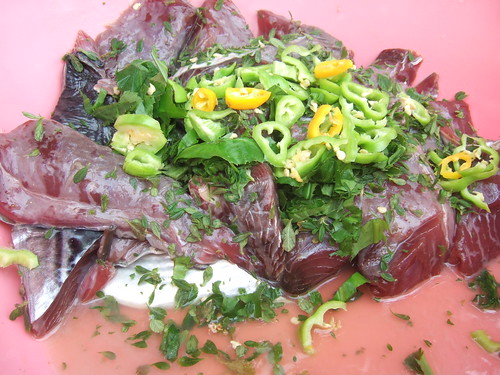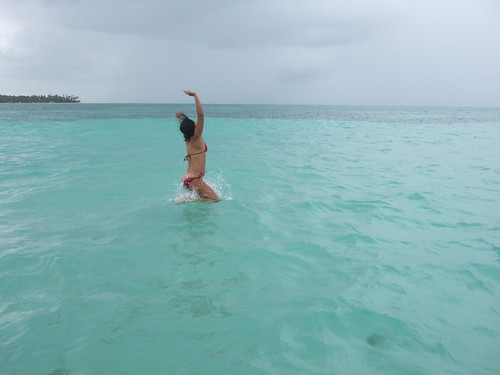Sun and Rain in Castara Bay, Tobago
After an early ride to the airport from Grand Riviere, we boarded a 20-minute flight to Tobago. We felt very relaxed and we were ready to actually do some activities on the next island. I initially booked a place at The Naturalist, but a reservation glitch on their end left us without a room. To make up for it, the owner made sure we had a room next door, at The Sea Level, for our three-night stay on Castara Bay. He also had a car pick us up at the airport and bring us to this north western part of Tobago.
I chose Castara Bay because it is touted as a fishing village where the Rastas still use a seine net to haul their catch. The Dr. expressed an interest in fishing and I was attracted to the laid-back vibe our guidebook mentioned, so I thought it would be the perfect place for both of us. We never got to see the fishermen use any sort of nets during our four days there (they just used plastic bins to carry them from the boat to the fish co-op) and the Dr. never had a chance to fish because he wasn’t willing to pay for a US$250 charter boat, but we did use Castara as our base to see the rest of the island.
The sand is smoother and more brown on Castara than it was on Grand Riviere in Trinidad. Most tourists come to Castara in the mornings and leave in the afternoon because they’re staying elsewhere, so by the time the sun would set, we had the beach to ourselves.
Our first full day, we signed up with King David Tours for a snorkeling excursion complete with a barbecue on the beach. The Dr. brought his fishing rod hoping to catch some fish for lunch with our two entertaining guides. Eleven of us boarded the boat and set off to our first snorkeling stop a few minutes away from Castara. I’ve snorkeled so many times during my travels and have seen some of the most beautiful animals underwater, but nothing prepared me for the gargantuan size of Tobago’s fish. The usual parrot fish and yellowtail snappers were there, but imagine them five times the size you’ve seen them before. Imagine a school of anchovies swaying like a curtain in the water–oh, I just wanted to sashimi all of them right there and then.
We made a couple more stops to try and catch fish, but they weren’t biting. We just headed to No Man’s Land for our lunch barbecue. No Man’s Land is actually more like Every Man’s Land. It seemed every tour operator in Tobago was there with the same idea. All the locals knew each other and shared the one grill setup on the island. We were surrounded by young Euros with weird haircuts (can you say double P Diddy-style mohawks?) who made noise like university frat boys. I entertained myself by watching our skipper prepare our lunch of tuna and cucumber salad. A concoction of garlic, coriander, Scotch bonnet peppers and onions was rubbed on the fresh tuna fillets and then wrapped in foil before setting on the grill. Everything else, like the chicken and the potato salad, were prepared beforehand. We drank the rum punch and cold Carib and Stag beers provided while we waited for our feast.
After a very satisfying lunch, we boarded our boat again for our next stop. The Buccoo Reef is a protected marine park off Pigeon Point. Right in the middle of it was the Nylon Pool in all its emerald greenness. We were so far away from the beach, but this small pool of clear, shallow water was right in the middle of the sea. It was pretty cool and as you can see, it made for an interesting addition to my jumpin’ photos.
On our way back to Castara, the rain decided to pour and pour it did. Our entire boat group spent the last hour cheering every time we hit a big wave and smacked on the water. Red-faced and drunk, they all sang out loud while I cowered behind the Dr. to avoid the prickly pelts of rain.
It was a long day in the water and under the sun and I can’t say spending the rest of it in the rain was so bad. When we were completely showered and cleaned for dinner, it felt so good to be on steady land.
Related post/s:
Day 4 and 5 in Tobago: Castara Bay photos on Flickr
Days 1 to 3 were spent in the bigger island of Trinidad




